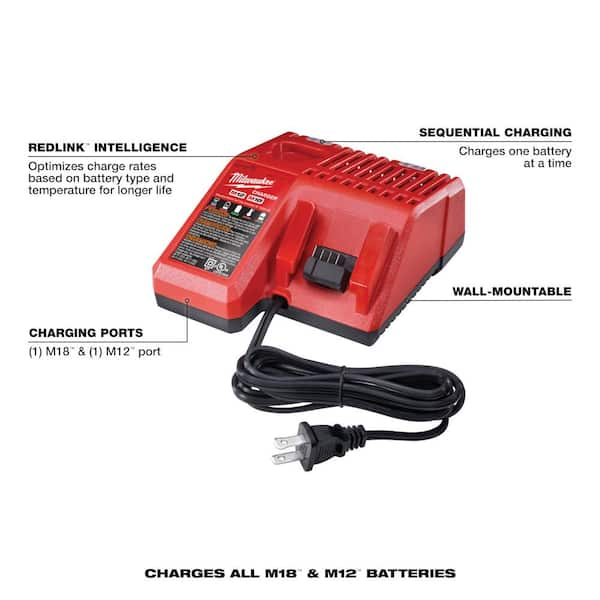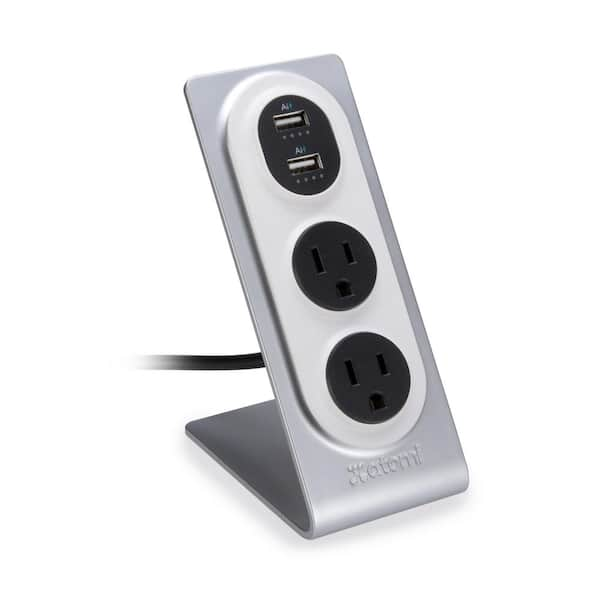

- Portable charger with wall plug at home depot portable#
- Portable charger with wall plug at home depot free#
With a fat plug, you’re going to have a massive letdown with outdoor outlets protected with an enclosure like the one seen here. You should also look to physical size of the plug.


Portable charger with wall plug at home depot free#
If you get a new job, and there happens to be a welder’s outlet you’re free to make use of, will you be able to? If a friend invites you to their old country cabin with an old dryer outlet in the garage, will this be useful to you? Electricity is all around us and you want your EV to drink that milkshake as fast as it can. Most important is versatility, which obviously includes the range of outlets available you can draw from. Tesla plug fits snug inside an outlet with enclosure Because of the 80% rule though, your EV will only draw 12 amps (maybe less, see below) from a 15 amp outlet. So for this little guy, that’s 15 amps max it can offer. Under the NEMA naming scheme, the number after the hyphen indicates the max amps for the outlet. The most common is formally called a “NEMA 5-15 receptacle”.

North America has two ubiquitous 120V outlets. But if two outlets share a circuit to the main panel, and you’re plugged in, and someone else plugs in a lawn mower, you’re going to trip the breaker.
Portable charger with wall plug at home depot portable#
Your portable charging cord may support 240V at 32 amps, but if your car doesn’t, you won’t see the benefit. Know your EV’s maximum AC-acceptance rate: the on-board AC charger inside your EV will have a maximum AC acceptance rate.So if an outlet offers 15 amps max, the cord you’re using may only be rated for 12 amps, because that’s the max the car will pull due to the 80% rule. The 80% rule is that when continuously drawing power from an outlet, you only take 80% of the outlet’s rated maximum amps. Look to max Amps (symbol: ‘A’) and understand the 80% rule: For 120V charging, the cords we review run anywhere between 8 to 16 amps, and on the 240V side it’s between 12 and 40 amps.With that, you can figure out your kW charging speed. You want to know how many volts you’re getting and also how many amps. But “L1” and “L2” are too blunt and cover a broad range of charging speeds. Saying “L1/L2” doesn’t tell you enough: Here in North America, “Level 1” refers to our default single-phase 120V charging (people still say 110V when they mean 120V, but the standard in North America has been 120V since ancient times).DC (direct current) fast charging requires large transformers, so that’s why DC is unavailable to residents. AC not DC: All portable charging cables are designed to let your car charge from the AC electricity flowing through our grids.We won’t be mad if you just call it your car’s plug either. Charging cord is understood as the portable EVSE. We’ll go with “charging cable” or “charging cord”, although they’re formally referred to as “EVSEs”, but ‘EVSE’ also includes fixed wall-mounted units. Nerds may correct you if you call it a charger: Portable charging cables are colloquially called ‘chargers’, but technically the ‘charger’ is a separate thing on-board the car that allows the car to receive alternating current (AC).Part 1: Things you should know when scavenging for electricity That’s concerning, because “electricity is everywhere” is a major argument in favor of EV ownership, but that’s only meaningful if you can usefully tap the grid. Some car makers gave a ton of thought to this while others clearly gave none. This review is pretty wild the specs (usefulness) of OEM standard charging cords are all over the place. In this post, we review the portable EV charging cords that come standard with the following electric vehicles sold in North America: Tesla (all models), the Audi e-tron, the Nissan Leaf, the Jaguar I-Pace, the Porsche Taycan, the Chevy Bolt, the BMW i3, and Hyundai (all BEVs).


 0 kommentar(er)
0 kommentar(er)
